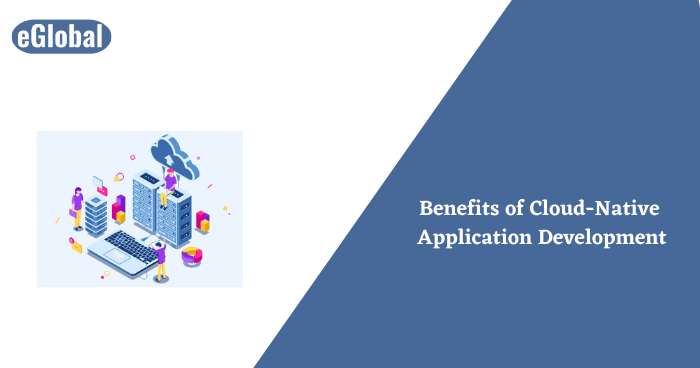

Cloud computing is a component of digital transformation for insurance, as it is for many other businesses. Several companies may have begun their cloud journey for various reasons, including scalability, enhanced client experience, increased agility, cost savings, and access to innovation. However, insurers must embrace new procedures and processes to realize the benefits of cloud computing fully. Cloud-native development is a methodology for developing and deploying applications. it uses a service-oriented design, micro services, containers, and application programming interfaces (APIs). here are the most significant benefits of cloud-native development.
Reasons why insurers should embrace cloud-native development!
The insurance sector is based on aging technological infrastructure. The majority of the time, the technology is decades old and will be developing with the time. where as these legacy systems have historically been stable and trustworthy, they are sluggish to change and, at times, inflexible to policyholders’ evolving demands. By transferring applications to a contemporary container-based platform, insurers may increase development pace and automate processes, reducing the time required to bring new products and services to market.
Additionally, by identifying components inside monolithic programs that can access through micro services and APIs, insurers may accelerate the development of apps that communicate with older systems.
Cloud-native apps use a pre-built infrastructure that enables developers to leverage and reuse pre-built components such as cache services, APIs, data virtualization, rules, and workflow engines. This decreases the development process’s complexity. Moreover, Developers may now concentrate on the complexities of the given application rather than on the framework itself.
Rather than having teams construct isolated apps that need IT assistance, cloud-native development models emphasize on-demand provisioning, which enables developers throughout the business to access the infrastructure they require when they need it.
Whereas, a cloud-native development method built on containers (in conjunction with orchestration technologies) may provide developers the control, visibility, and self-service they want while also providing IT companies with a standardized platform for ease of maintenance.
However, To stay up with policy holders’ and development teams’ expectations, insurers want a dependable method for rapidly deploying code changes into production while also receiving feedback on those changes. Cloud-native development models use a continuous integration/continuous delivery technique, which speeds up the distribution of code, updates and enables more frequent modifications. Additionally, CI/CD automates the dependable and consistent deployment of programs to specify infrastructures while also automating testing and security compliance. Without compromising operational capacity, CI/CD allows insurers to deploy cloud-native apps.
To provide a superior user experience, you must release new features more often and iterate regularly. Moreover, this also implies that you should approach application development from a mobile-first perspective and adhere to human-centered design principles, such as design thinking.
Today, there is a strong emphasis on business data liberation via the creation of compelling consumer and employee experiences. Also, API-based integration is the most common method of connecting colossal business data repositories to agile front-end applications. which will enables organizations to avoid abandoning decades-old investments in legacy platforms and instead of revitalize them with the addition of web and mobile apps.
Furthermore, Indeed, corporations must prioritize this in an environment where their established business models are challenged and disrupted by smaller, more nimble startups. However, Cloud-native apps may enhance customer experiences.
Collaboration between IT and business units will require to implement a cloud-native strategy. To provide needed business functionality, development teams must collaborate with IT operations and lines of business. This situation may signify a cultural movement away from sequential monolithic development techniques toward a more collaborative, agile style in certain circumstances.
New tools and technology might help break down some of the barriers that monolithic procedures have generated over time, a DevOps culture is built on cooperation.
Check: How Much Does It Cost To Hire A Devops Engineer?
The days of three-year locked-in licensing for proprietary hardware and software are long gone. Today, as open source and cloud technologies proliferate, hybrid and multi-cloud architectures are becoming the standard. Enterprises often use a hybrid cloud strategy that combines on-premise data centers with one public cloud platform. The discourse has evolved across cloud platforms to include the ability to migrate data between clouds, ensuring that you are never again tied to a single provider.
Moreover, platforms like Redhatand OpenShift enable this by serving as a unified management layer for cloud infrastructure and also resources regardless of the vendor providing them.
There has never been a better moment to fully use the cloud by re-architecting or rewriting your apps as cloud-native applications.
Similarly, you may begin your modernization journey with an application modernization evaluation and a single pilot project to familiarize yourself with this method before gradually increasing your cloud usage. You’ll want to work with someone that understands cloud-native computing and is capable of assisting you in defining and executing your vision.
Hope you got benefits of cloud-native app development! Are you planning to develop an App for your business? contact us & get free quotation today.

Apr 10, 2025

Apr 8, 2025

Apr 7, 2025

© 2017 All rights reserved.